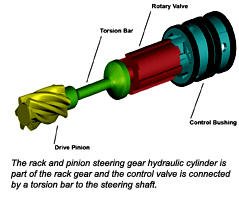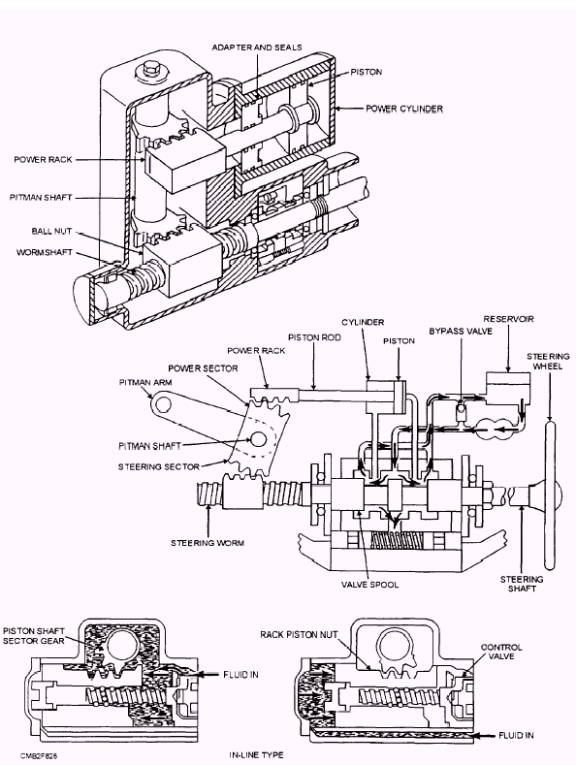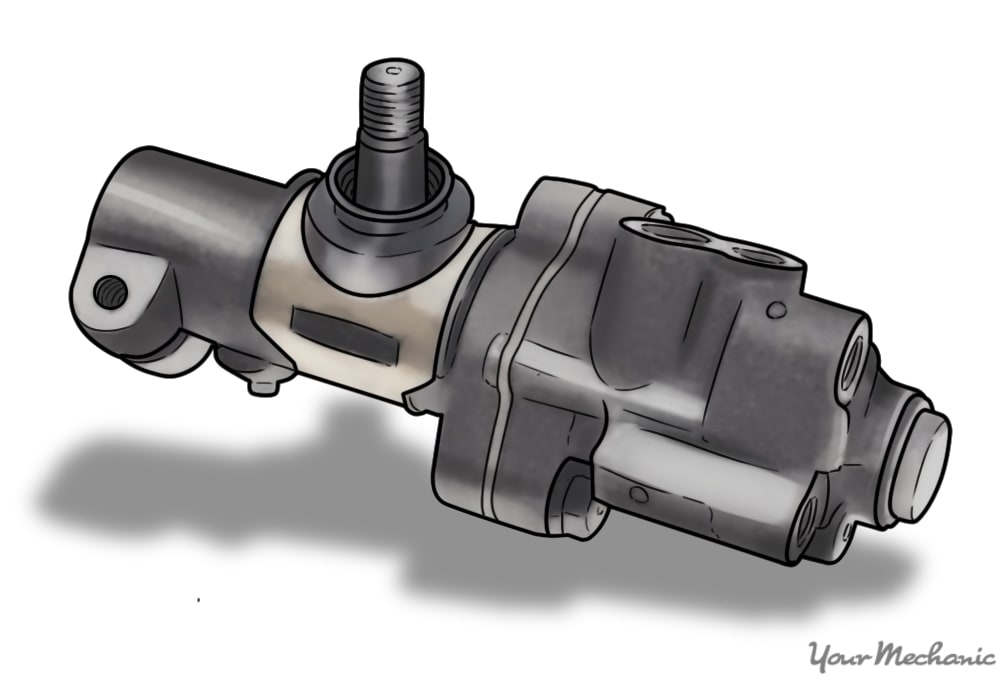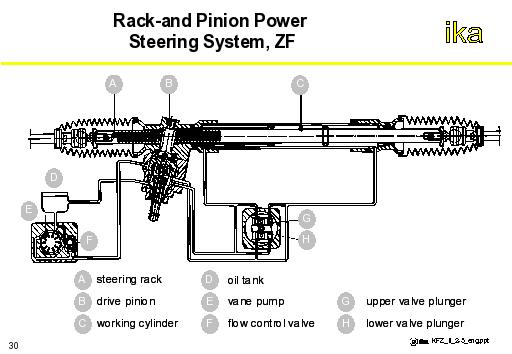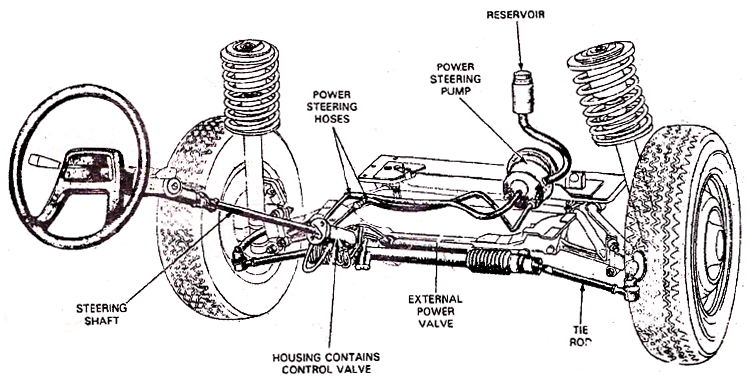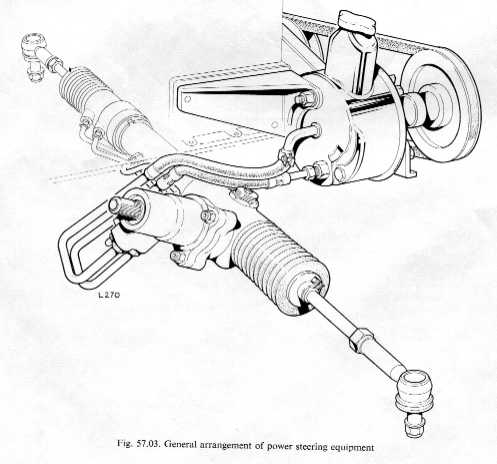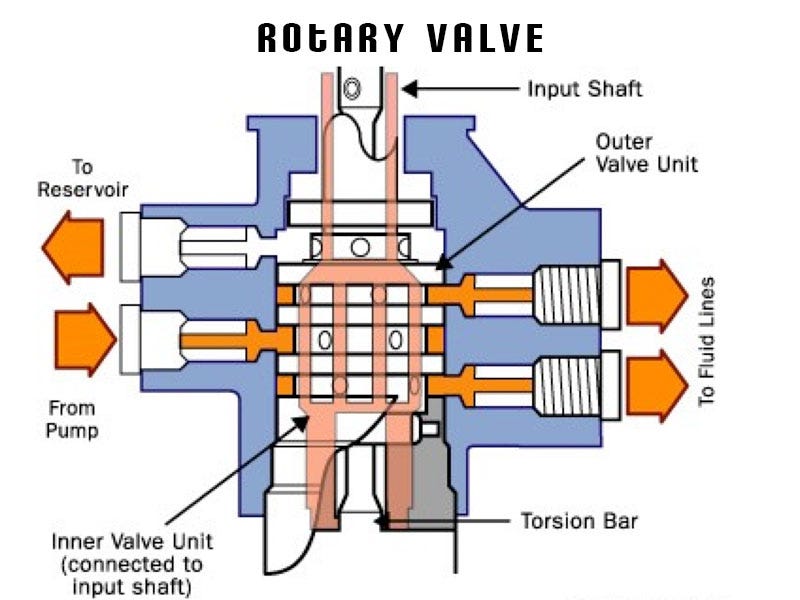When the power steering control valve breaks it will display a few common symptoms including a smell of burning power steering fluid a whining noise while turning or power steering fluid leaking from.
Where is the control valve located in a rack and pinion power steering system.
The rack and pinion steering gear hydraulic cylinder is part of the rack gear and the control valve is connected by a torsion bar to the steering shaft.
Key parts of the power steering system include the rack and pinion or recirculating ball mechanism.
In most cases when a power steering system fails on older vehicles it s due to this part or the parts that are attached to the control valve.
It has a set of retractable vanes that turn inside an oval chamber.
Technician a says that the pump pressure regulator is bad.
Therefore the steering wheel rotations move the pinion and then the rack in that order.
The control valve opens a pressurized flow to and from the hydraulic cylinder.
The use of a variable rack still using a normal.
A rack and pinion is commonly found in the steering mechanism of cars or other wheeled steered vehicles rack and pinion provides less mechanical advantage than other mechanisms such as recirculating ball but less backlash and greater feedback or steering feel the mechanism may be power assisted usually by hydraulic or electrical means.
In a power steering system the design of the rack is a little different.
In all these types of power steering systems the pump delivers fluid to the control valve.
When the wheels are turned all the way left a pressure reading less than specification is found.
A power steering pressure gauge is being used to diagnose a system problem on a rack and pinion system.
When the gauge valve is closed the pressure reading is within specifications.
This pump is driven via a belt and pulley.
